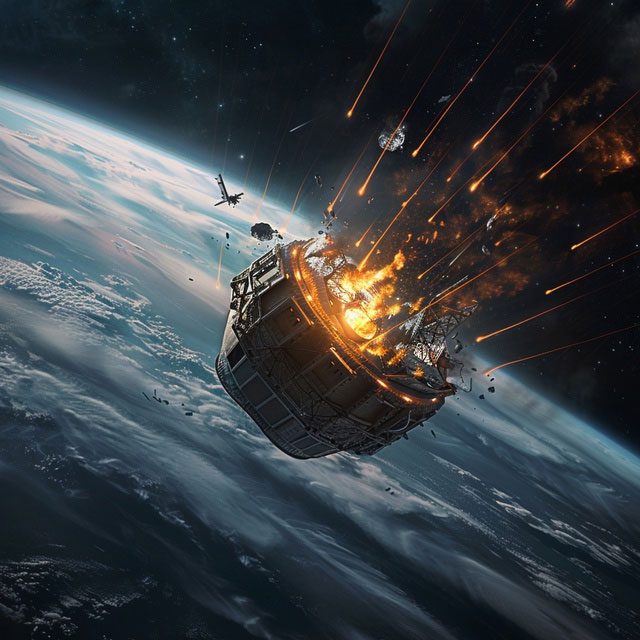The Space Debris Problem: A Call to Action from the Cosmos
Working at the European Space Agency (ESA), Stijn Lemmens holds a unique position as a Senior Space Debris Analyst. His job involves tackling space pollution, collaborating with spacecraft designers and other related industries to ensure that space missions do not collide with space debris.
In the aerospace industry, rocket launches attract significant attention, but few consider the items that are discarded into space after a flight.

Illustration of space debris.
In the past, many space missions did not account for the consequences of their actions. Instead of calculating trajectories to ensure that decommissioned objects would be “burned up” in Earth’s atmosphere, many satellites, rockets, and other debris were left floating in orbit around Earth. From the ground, experts must constantly monitor this debris and compute future mission trajectories to avoid obstacles.
“For the past 60 years, we have treated space as if it were an infinite resource,” said Lemmens. “But in the last decade, it has become clear that this is not the case.”
At first glance, the simplest solution might be to design spacecraft so that they become harmless after completing their missions. However, the reality is much more complex.
At ESA, Lemmens collaborates with engineers and scientists from around the world to find a safe solution. Some proposals suggest that reusable launch systems could be the answer, while others are exploring advanced guidance systems to avoid collisions. Other experts are looking for ways to retrieve and dispose of space debris without affecting the aerospace industry or ground infrastructure.

“Burning up” satellites in the atmosphere is a widely accepted method – (Illustration).
After some time, Earth’s atmosphere will pull old satellites out of orbit. Following the official guidelines agreed upon by various nations, satellites are to lower their altitude as they near the end of their operational lives, ensuring they can re-enter the atmosphere.
Previously, the target was for this process to take no more than 25 years; however, Lemmens and his colleagues now propose that this time frame should be reduced to 5 years or less, and manufacturers need to consider this capability from the early stages of mission planning.
Convincing stakeholders to adhere to new regulations is not easy, especially when changing the prevailing mindset that space can hold as much debris as it wants due to its vastness. If changes are not made soon, the amount of debris in low Earth orbit will soon become overwhelming, hindering future space missions and causing unnecessary accidents.
Currently, the space around Earth contains approximately 11,500 satellites and over 35,000 pieces of debris of various sizes that are being tracked. Organizations and nations continue to ramp up satellite launches, meaning this number will only increase.
One day, we will have technology that makes it easy to recycle satellites. But as Lemmens notes, until we can achieve this, satellite and spacecraft designers will need to consider long-term solutions to establish a new standard for the industry.


















































